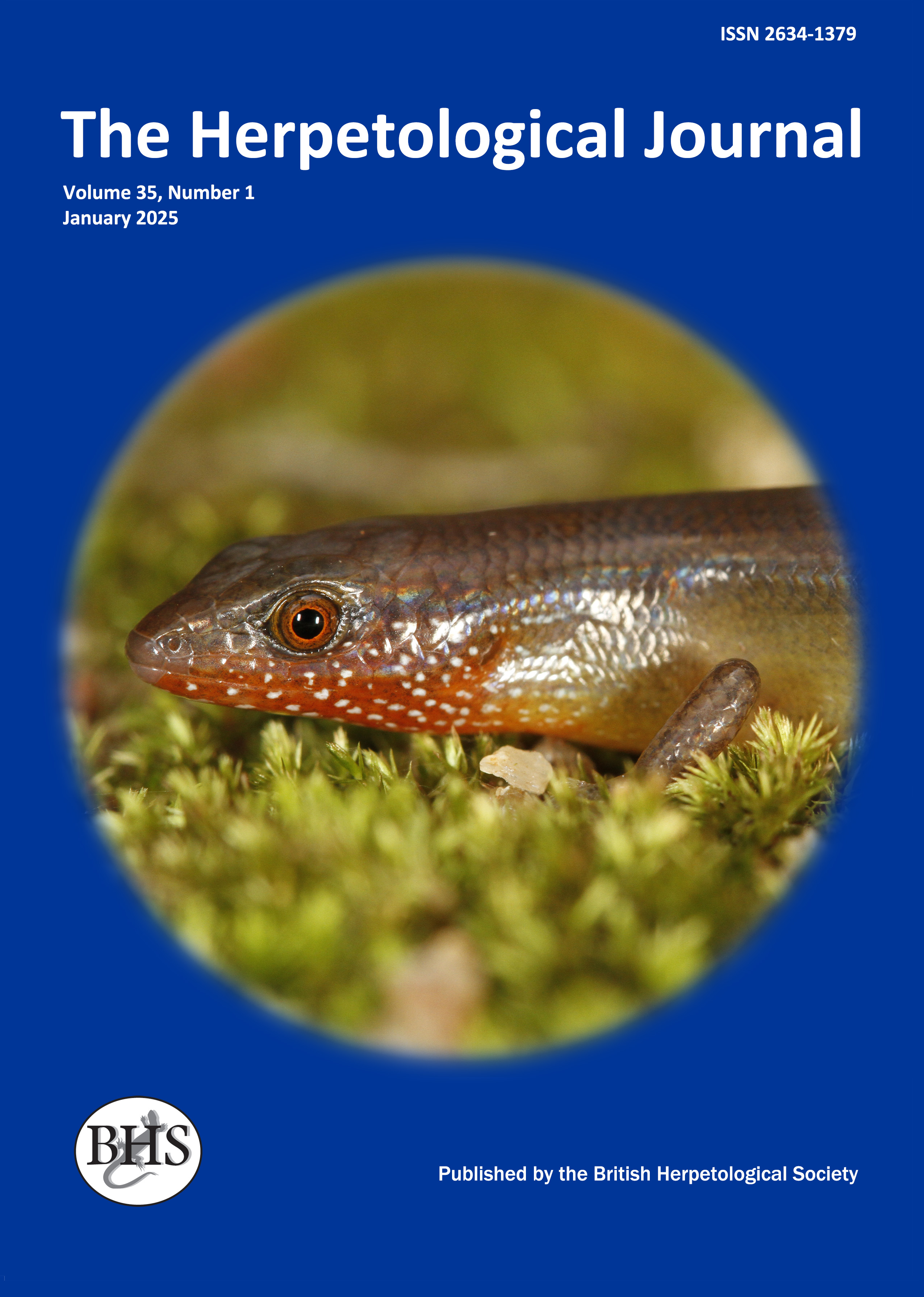
The Herpetological Journal
The Herpetological Journal is the Society's prestigious quarterly scientific journal. Articles are listed in Biological Abstracts, Current Awareness in Biological Sciences,Current Contents, Science Citation Index, and Zoological Record.
ISSN 0268-0130
2021 Impact Factor from Clarivate for the Herpetological Journal is 1.194, an increase of 0.332 from 2020.
pdf 02. Using variations in cloacal disc regions to individually identify Congo caecilians Herpele squalostoma (Amphibia: Gymnophiona)
4 downloads
Subscription / purchase required
pp. 110-115
Authors: Kimberley C. Carter, David J. Gower, Mark Wilkinson & Benjamin Tapley
Abstract: Photographic identification and pattern-matching techniques are increasingly used for minimally invasive identification of individual amphibians. However, many caecilian species lack obvious, distinctive patterns or colourations (as well as limbs) which makes visual identification challenging. We used photographic records and Wild-ID to investigate the use of cloacal discs and surrounding annular grooves for individual identification in a captive population of Herpele squalostoma at ZSL London Zoo and compare similarity with preserved specimens. We photographed seven captive H. squalostoma over a maximum period of 59 months and 43 preserved museum specimens. We found that Wild-ID analysis of photographs is not viable for individual identification of this species. However, our results showed that the software could distinguish between animals, scoring >0 (0 = no match, 1 = perfect match) for photographs of the same live animal. However, the software did not reliably recognise individuals over time; where photographs were matched against the same animal from different dates the mean scores fell below the threshold of 0.1 (mean score of photographs with annular grooves present = 0.00397825; mean score of photographs of cloacal disc only = 0.0213814). When comparing a subset of all museum specimen photographs the similarity score was very low (mean = 0.00039712), however preservation quality and size differences may have confounded our results and made the scores unreliable. A photograph-matching survey performed by zoological and biological research professionals proved that H. squalostoma can be identified by direct inspection of photographs of the cloacal disc region (n = 82, mean = 60% correct, SD = 34%, median = 71%). Although Wild-ID is not a valid method for long-term identification based on the cloacal disc region, distinctive differences are visible to the eye and suitable for photographic identification in small, captive populations and thus may be beneficial to ex-situ populations of caecilians.
Keywords: amphibian, identification, pattern, photographic, non-invasive

